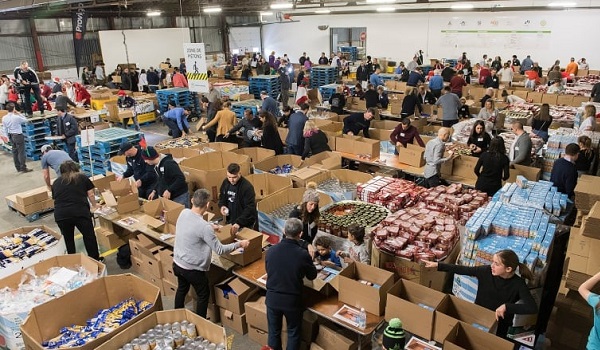Demand for food banks continues to be on the rise
As millions of Canadians head into the Thanksgiving weekend, food banks across the country continue to see a surge in demand.
“If you compare even September of last year versus September of this year, we’re up 17 per cent,” said Alex Boyd, the CEO of Greener Village in Fredericton, told CTV News.
In Mississauga, there was an increase of nearly 60 per cent in the number of people who went to food banks in 2024 compared to last year, according to CEO of Food Banks Mississauga Meghan Nicholls.
“The numbers are moving in the wrong direction as wages don’t keep up with the cost of rent or the cost of food,” Nicholls said.
Volunteers and charity leaders lean in to help—packing and sorting lunches and hampers—but face mounting challenges.
“We’re dipping into reserves now. We’re seeing that the numbers keep increasing, the price of food keeps increasing, everything is increasing,” Salvation Army Community and Family Services Manager Alice Wannan told CTV News in London earlier this week. “That’s our biggest concern right now is how do we sustain these numbers.”
According to some charity leaders, they can’t. Some warn that demand may one day outpace what they can provide.
“If you go to, you know, any government and say, ‘hey I’m struggling,’ they’re going to say go to a charity and they will help you,” United Way of Bruce Grey Executive Director Francesca Dobbyn told CTV News in London this week.
“Of course we will, we will do our absolute best to help you. But, whether or not somebody has food today, whether or not somebody’s utilities are turned on today, should not depend on how good of a fundraiser I am.”
According Food Banks Canada, more than 1.9 million visits are made to a food bank in Canada every month and about a third of those visits are children.
“We are continuing to hear from food banks across the country that despite potentially economic upswings, the demand has not slowed,” said Erin Filey-Wronecki, the Chief Development and Partnerships Officer for Food Banks Canada.
Filey-Wronecki says the current model is not sustainable.
“Food banks are meant to be there for emergencies, they’re meant to be there for people that are in sort of a downturn, in need. It’s not meant to be the backbone of the social safety net,” she said
Food Banks Canada is calling on Ottawa to implement a groceries and essentials benefit, which they describe as a top-up to the existing GST/ HST credit that already targets low- and modest income Canadians.
“That will help sort of put that influx of extra income into their pockets so that they can buy the essentials that they need,” said Filey-Wronecki.
Katherine Cuplinskas, Deputy Director of Communications in the Office of the Deputy Prime Minister and Minister of Finance Chrystia Freeland, said in recent years the government has significantly expanded the social safety net.
“In 2015 the poverty rate in Canada stood at 14.5 (per cent), and today, it has already been brought down to 9.9 (per cent),” said Cuplinskas. “We have more work to do and that is why we are rolling up our sleeves.”
Cuplinskas said the Canada Child Benefit is lifting hundreds of thousands of children out of poverty and highlighted several other programs, including $10-a-day child care, the dental care program and enhancements to CPP and OAS for seniors over 75.
At Greener Village in Fredericton, Boyd says the team focuses on innovation to stay as sustainable as they can.
“The reality is we can only do what we do because the community comes along and says we believe in what you’re doing and want to support,” they said. “It is important to support your food bank at this time.”
With files from Scott Miller, CTV News London













